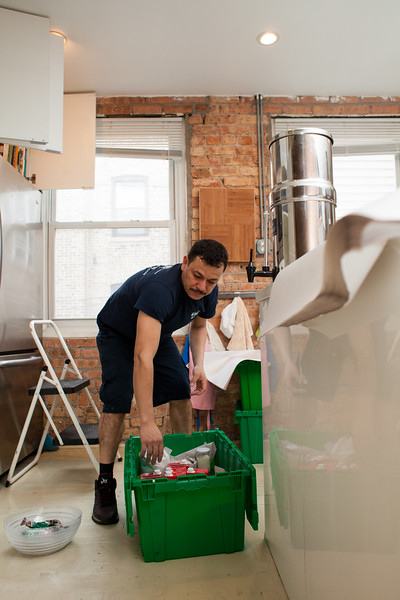When you’ve reached the exciting time of life to retire, one of the first things you may be thinking about is downsizing the home and living a simpler life. Whether you want to travel more, move to a different area of town, or just have less house to maintain, retirement is the time to reduce the clutter and simplify life.
It can be overwhelming to downsize a lifetime of belongings, but once it’s done you can start to decrease the outgoing costs of maintenance and utilities that you once covered with your salary. Take a look at these tips to downsize and starting living with fewer costs and less stuff!
Prepare for the new space
Whether you’ve decided to move to a condo building, into a tiny home near family, or into an RV, you need to look at the things you have in the current home you’re in and start planning for what things will go into the new home. If you’re going into a very small property, it may be time to pass your items onto children, have a garage sale, or begin to donate belongings.
For those that want to travel during retirement, you’ll want to think about how many items you can travel with and if selling most of your items would help you to afford travel. If you plan to live close to family, you could live with more of your things and still offer much of it to relatives that won’t fit into your new home. On the other hand, moving from a home to a condominium or other home, you may realize that your furniture and belongings don’t work in the new space. Don’t allow your stuff to hold you back from your retirement dreams.
Consider real estate costs
The good news is that you are going to be spending less on maintenance and home costs now that you are downsizing, but you’ll still need to consider real estate costs with this big change. Selling your home may mean you have to make repairs and other renovations to get it to sell.
Then you’ll be buying a home which comes with down payments, closing costs, and more. In some cases, you may find that renting out your current home will help to fund your new living situation. By moving on from your home though, you’ll save on insurance, utilities, and maintenance costs.
Don’t assume you’ll be profitable
While selling the home and lowering expenses sounds like an easy way to double your nest egg, don’t expect that to be the case. You may find your house isn’t worth as much as you thought due to the current market and you’ll likely be funding your new home or chapter in life with any money from the sale. Get what you can from the sale of the home and spend it wisely going forward to sustain your new lifestyle. You may find that it’s wiser to keep the home and rent it out.
Ask for help when it’s time to sort your things
One of the hardest parts of downsizing is making decisions on your belongings. Sometimes having a friend or relative help make decisions with you will make it easier. You’ll want to give yourself at least three months before the move to start downsizing the home. Pass items on to your children and grandchildren that they would have received from you in the future and hire an organizational expert to sort through the rest.
Only keep the things you absolutely love or that have a function in your life, while getting rid of anything that is for “just in case” or unnecessary. You may need new ways to organize your things or they may not seem as useful in the next chapter of life after you leave this house.
Downsizing for new retirees is one of the last things you’ll need to do before you can start to enjoy retirement. Take it one step at a time and once you’ve downsized and started this new chapter the way you’ve dreamt it, you can sit back and relax now that your dreams have become a reality and all of the difficult tasks are done!





